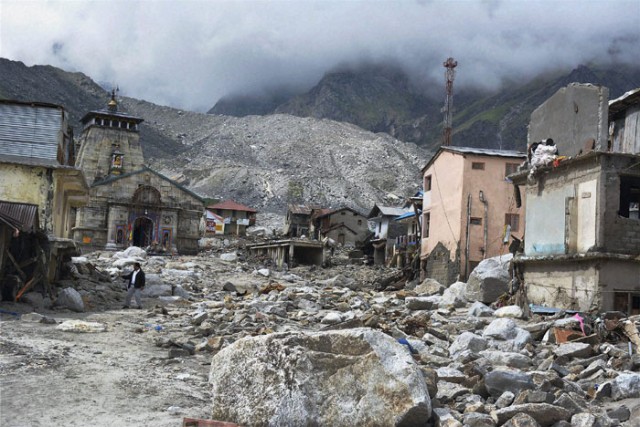2 January 2014
2013 landslides – the five most important events of the year
Posted by Dave Petley
2013 landslides – context
Having taken a break from blogging (and indeed from all work) over the Christmas and New Year period, I started to ponder the most important landslides of 2013. This is of course purely subjective, but this is the list that I came up with:
1. The two debris flows at Kedarnath, India

http://www.indianexpress.com/picture-gallery/first-pictures-of-devastated-kedarnath-temple/2935-1.html
..
The extreme rainfall event in Uttarakhand in June was without doubt the most deadly multiple landslide event of the year. The twin debris flows that struck the temple at Kedarnath were the defining event of the disaster, with a very complicated origin. This event also presages the types of event that we can expect in the future as the climate in high mountain areas continues to change.
2.The Bingham Canyon Landslide in Utah
..
The award for the most spectacular landslide goes to the Bingham Canyon slide in Utah in April. This may well be the largest mining-induced rapid collapse of all time, and the most expensive single landslide too. That the slide was anticipated is notable, although it does appear that the volume and runout distance were somewhat greater than had been expected.
3. The Jiama / Gyama mining landslide in Tibet
..
On the subject of mining induced landslides, in March the spectacular and remarkable mining induced landslide at Jiama / Gyama in Tibet killed 83 workers. Although denied by the authorities, there is little doubt that this slide was triggered by the mining activity. The long runout and high mobility of the debris is notable, as is the continuing lack of information about the event, in notable contrast to Bingham Canyon.
4. The La Pintada landslide in Mexico

http://www.google.com/hostednews/afp/article/ALeqM5jgxArPD5xS2gHI95daKQfXYvvyNA?docId=CNG.f3b813c83565864ba6d2d2ae56dd28ec.6c1
..
In September, a pair of tropical cyclones brought exceptional rainfall to Mexico, triggering floods and landslides. The most spectacular event occurred in the village of La Pintada, where a large landslide struck the town, killing 68 people. This is the type of event that is extremely difficult to anticipate, but deadly in terms of impact.
5. The Izu-Oshima debris flows in Japan
..
Finally, the multiple debris flows at Izu-Oshima, triggered by typhoon Wipha, were remarkable not just for the cost in terms of lives lost (which was unusual for a more developed country), but also for the mechanisms of failure. In this case, as the image above shows, the entire side of the hill has failed in multiple shallow landslides.
Please submit your list
I am sure that you may have a different list – please feel free to post your list, or to disagree with mine, in the form of a comment.





 Dave Petley is the Vice-Chancellor of the University of Hull in the United Kingdom. His blog provides commentary and analysis of landslide events occurring worldwide, including the landslides themselves, latest research, and conferences and meetings.
Dave Petley is the Vice-Chancellor of the University of Hull in the United Kingdom. His blog provides commentary and analysis of landslide events occurring worldwide, including the landslides themselves, latest research, and conferences and meetings.